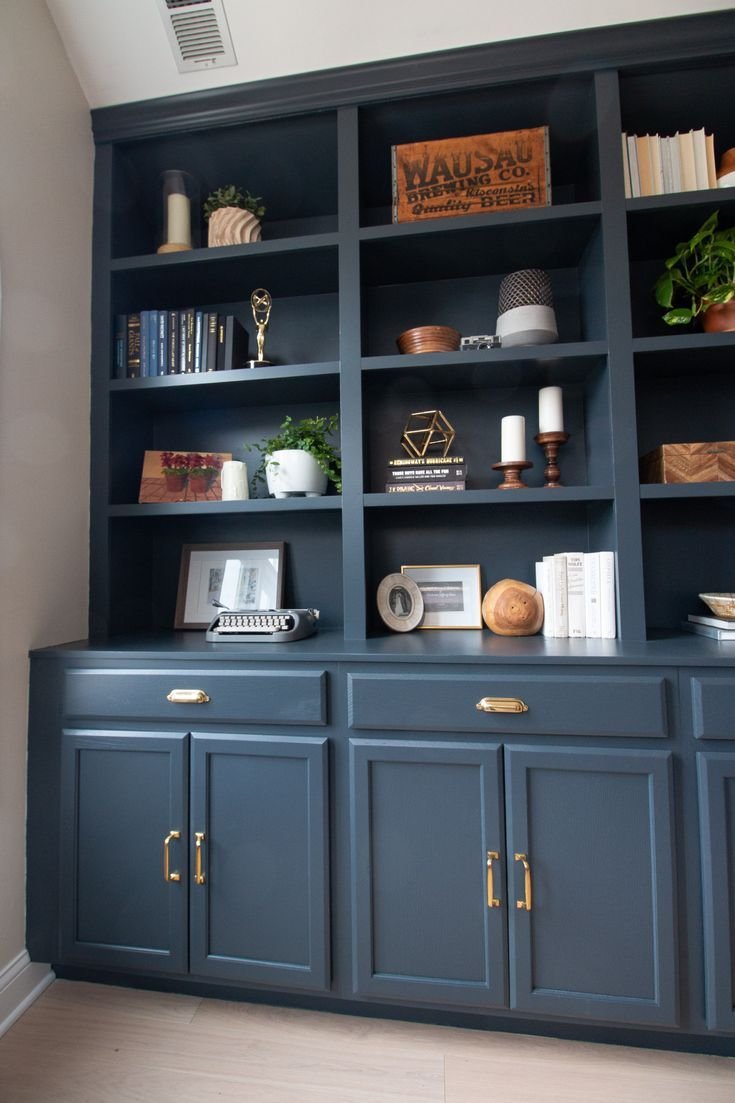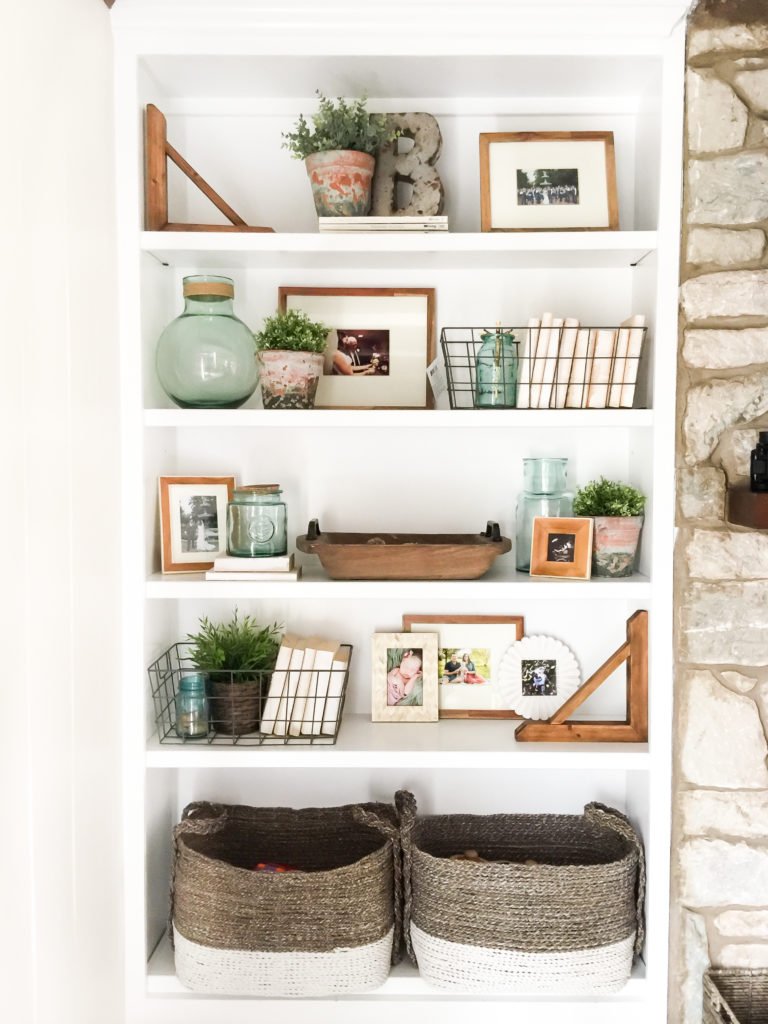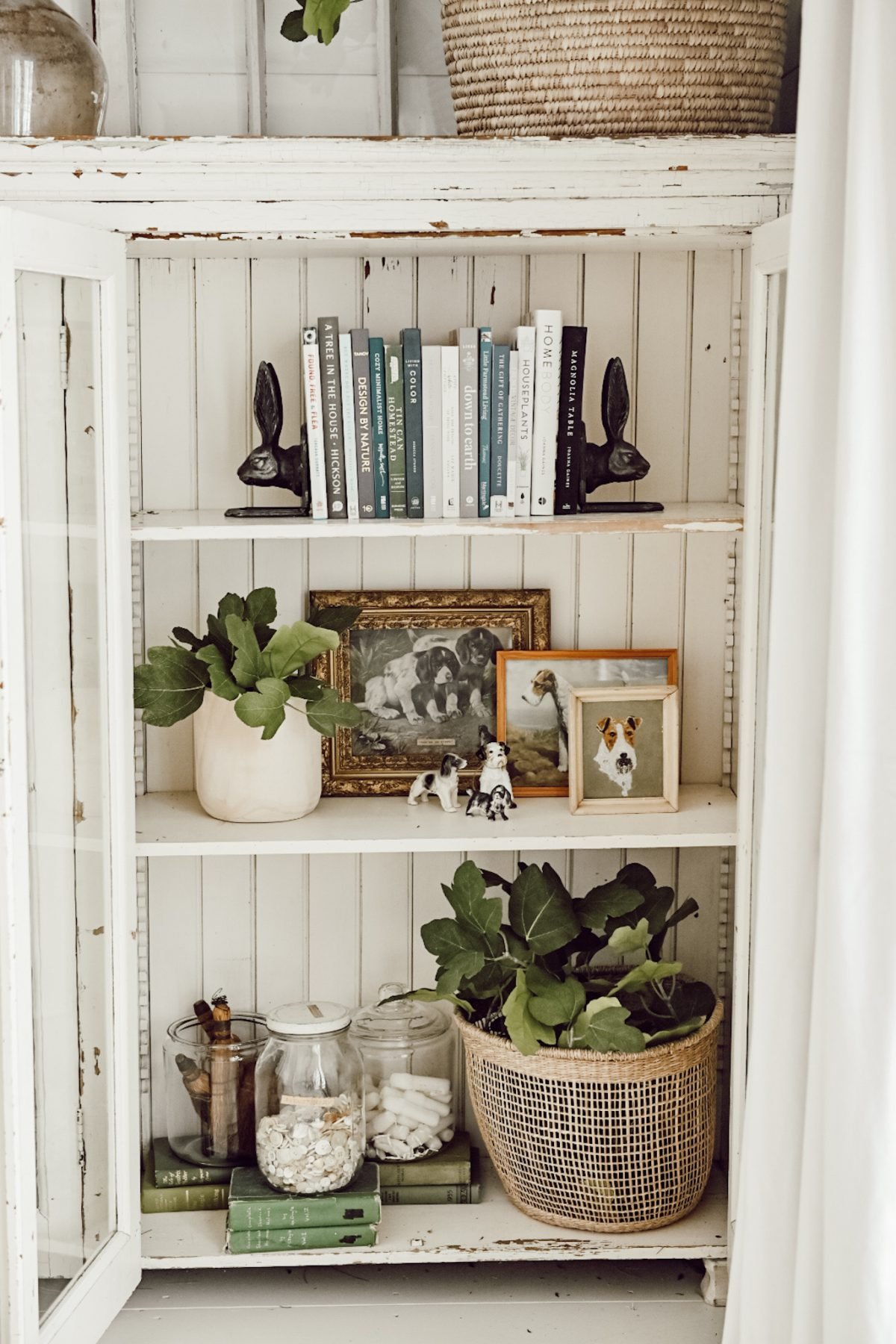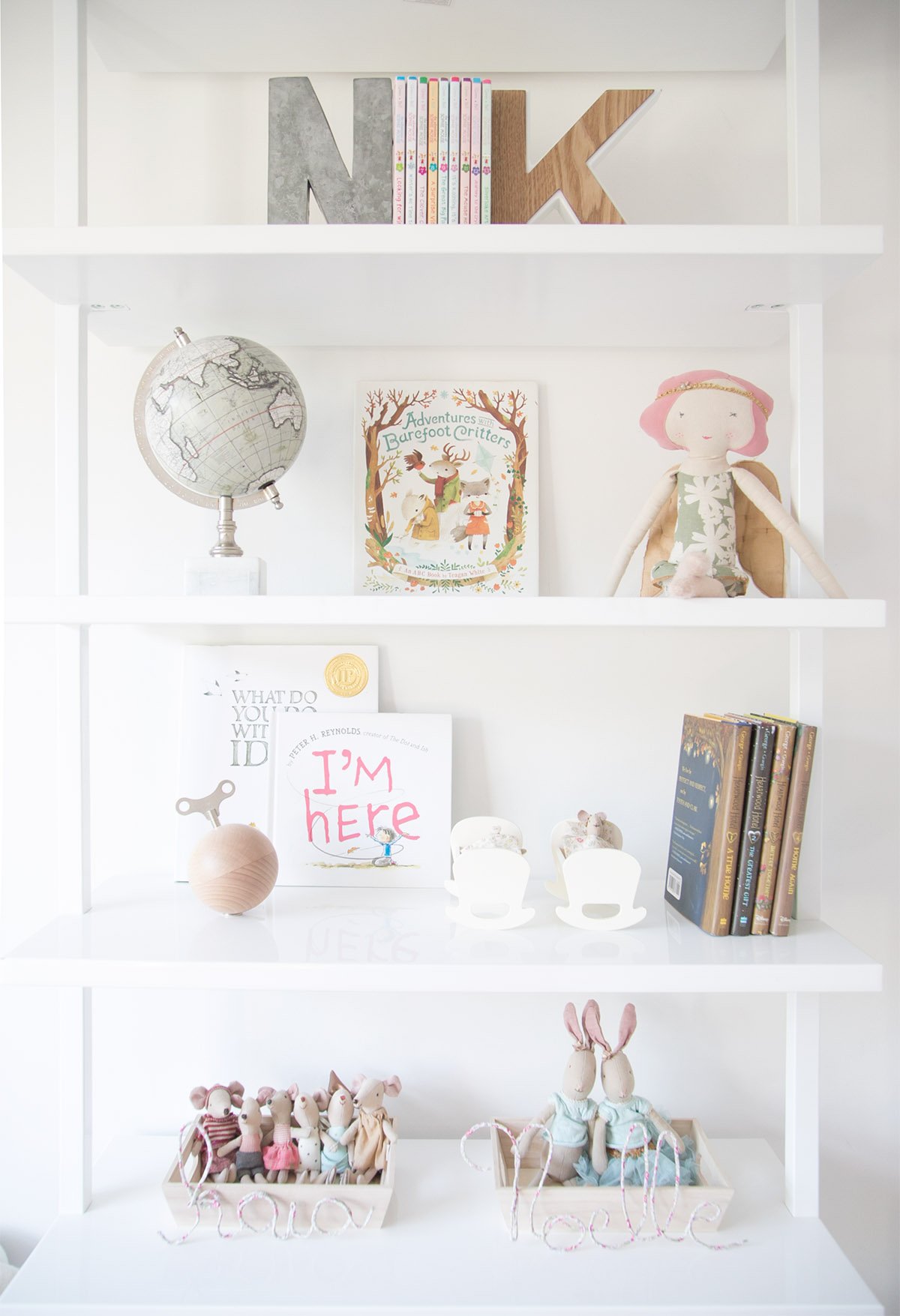Style Your Shelves Like A Pro
Our team at Rooms With Style has a true affinity for open shelving. Shelving is a beautiful feature of a home, it’s super functional, and it lends a clean slate for creativity and personality to shine. However, styling shelves can feel like a daunting task. How does one achieve shelves that look full, but not cluttered? How do you strike a balance between functionality and aesthetics? Our team can tell you that shelf styling is both an art form and a science, and we have some simple tips that you can follow if you are looking for a place to start.
Floating shelves in a kitchen look great styled with beautiful elements that are very functional.
Source: The Effortless Chic Blog
Consider Space & Functionality
First, consider where your open shelving is located and how you want to use your shelving to aid in the functionality of the space. In a living room, you may want to display family photos, a record player, and “coffee table” style books. You might want to include books related to your work, and professional certificates or framed diplomas in your office. In the kitchen, you can display a pretty ceramic mixing bowl, a vintage tea kettle or cookbooks to your shelves. Shelves in a bedroom may show off a stack of your favorite reading, a houseplant with trailing leaves and a decorative treasure from your last vacation.
Built in shelves in an office show off personal photos and awards.
Source: The DIY Playbook
Layer Multiple Elements
You can layer a variety of different elements on your shelves such as artwork, personal photos, books, decorative items, and plants for a display that has lots of interest. Choose artwork that you love and fits the aesthetic of your space. If you have a few photos that you want to display, try printing them in black and white to keep the look cohesive. You can display well-loved books that bring you joy, or you can look for thrifted books that fit a specific color or size that you are after to enhance your shelving. Try taking off the book jackets to show off the monochrome book covers, or to keep things simpler, turn all of the books around so that the spines are facing the back of the shelf. Layer framed artwork in different sizes, one slightly overlapping the other.
Layered artwork, baskets, jars, greenery and books add lots of interest to these shelves.
Source: House By Hoff Blog
Mix Different Textures, Sizes, Shapes
You can bring a lot of interest to your shelving by adding items that have a mix of textures, sizes and shapes. For example, a natural woven basket can add texture and depth. Group items together that have different attributes to create balance, such as items that are both short and tall, smooth and textured, straight and curved. Play around with your groupings until you find an arrangement that you like. A good rule of thumb for groups of items is the rule of three. This could be three single items together, or three elements together. An example of three elements would be a stack of books (element 1), with a ceramic bowl on top of the books (element 2) and two strands of decorative wooden beads in the bowl and draped out over the side (element 3).
These country chic shelves have lots of depth due to the different textures used… natural woven baskets and plants add rich visual interest.
Source: Liz Marie Blog
Less Is More
To keep your shelving looking cohesive, we have an easy phrase to remember... less is more! Use fewer colors. Pick a color palette, around 4-5 colors, and be sure that the items you put on your shelves fit this color scheme. Sticking to a specific palette will make your shelves look more put together and cohesive. Use the concept of “less is more” as you consider the number of items on your shelves. It’s easy to over-fill your shelves, which can make things look cluttered and messy. It’s important to embrace some negative space as well. Every shelf only needs a few elements. Keeping some open space on each shelf will enhance the overall look. An easy way to create space and balance on your shelving is to follow this formula. You can add one focal point item to the top shelf, and then move down. Add groups of three items or elements on the shelves below, and your bigger, visually heavier items should sit on the bottom shelves.
These bookshelves feature a single focal point on the top shelf, lots of negative space, and the use of a muted palette to keep the look in this kid’s space light and soft.
Source: Winter Daisy Blog
Learn as You Go & Have Fun
Finally, the most important advice we have for you is this: learn as you go, and enjoy the journey of styling your shelving! You will probably try a few different arrangements on your shelves before deciding what you like best. You may have an open spot on the shelf as you hunt for the perfect frame in a specific size and color to display a family photograph. You may want to step away for a few hours or a few days and come back with a fresh perspective. Remember, it’s all about curating a look that reflects your personal style and a space that sparks joy in your home.
Author: Marla Carlson, RWS Guest Blogger






